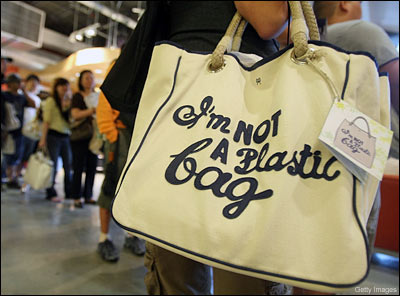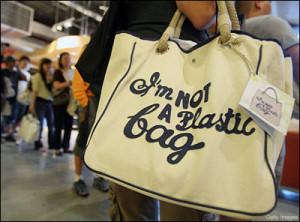Look around you. If there is one thing in abundance other than the envelope of air, it is plastic. Almost 73% of the items we use have plastic in them. Given that they are durable, flexible and long-lasting, one can see why they are used in everything – giving us a reason to love these polymers. They are made from carbons and other materials, then heated, broken down and then rebuilt as plastic resin that be molded into any shape you like.
The carbon that is used to make plastic, however, comes from oil – one fossil fuel product, that’s no very good for our environment. In addition to this, many types of plastic aren’t even biodegradable! (Either because they cannot or people don’t recycle them.) And even if they are being recycled, only 1% of the 7 billion pounds of the plastic succeeds in the mission. Yet amidst all the harm it is creating, plastic seems to be one of our indispensible companion. Unless… We have other alternatives.
Glass
Good old mate, from yester years – Glass was once the item used to build milk bottles, that we now filled in plastic packets. Plastic has replaced glass be it with water bottles, soda bottles, jars or containers. But sometimes, it is good to go back to old ways. Unlike plastic which is derived from fossil fuels, glass is in fact made from sand. This renewable resource does not contain any chemicals that can leak into your body or food. And it’s easily recyclable!
Reusable Shopping Bags
When plastic bags were first introduced, we had a choice between using plastic or paper. But as known, disposing off of plastic bags is one big hassle, where it clogs the waste lands and when thrown into the ocean kill millions of sea turtles, birds and ocean mammals each year. But you do need those bags – so what do you do? In spite of omnipresence of plastic bags, reusable bags can be accessed only if you make the effort to. Many retailers are shifting to these type of bags which come in canvas, woven plastic fiber, hemp, cotton and even leather. You’ll also find nylon one which can be folded to even fit your pockets! These bags are not only useful for carrying groceries, but for any other use as well.
Plastic Addictives
While we might think that plastic is the main problem, there are researchers out there who think that plastic can also be the solution. This is proven, when plastic addictives are sought to be created. Plastic addictives are those who are biodegradable. They are made by throwing in prodegradants concentrates (PDCs) which are usually compound metals. They promote oxidation processes that let the breakage of plastic into brittle, low-molecular-weight fragments occur. Microorganism gobble up these very same molecules, and are not toxic to the environment. These bags are seen in our day to day life, be it thing shopping bags, disposable diapers, food containers, etc. Thought they not a hundred percent biodegradable, the more environmental friendly that purer plastic.
Chicken Feathers
We all have heard the saying ‘Best from Waste’ – but does it have a practical use? Apparently, we can bring this reality. Chicken feathers are really hard to dispose off. And about 3 billion pounds of it have to be dealt with annually. But due to noble innovation, this problem can washed away and instead be used to prepare new water resistant thermoplastic. Chicken feathers are composed entirely of keratin, a protein so tough that it can give strength and durability to plastic. It’s found in hair and wool, hooves and horns, Researchers have decided to tap in the super strong keratin by processing the chicken’s feathers with methyl acrylate, a liquid found in nail polish. This bond, have been proven to be substantially stronger and more resistant to tearing than any other plastics. It is biodegradable… and makes use of the abundant waste of chicken feathers. We’re not complaining.
Liquid Wood
Liquid wood is the new promising bioplastic or biopolymer. The main trick of biopolymer is that they fake it. They look, feel and act just like plastic. But unlike petroleum based plastic, they’re biodegrable. This particular biopolymer comes from pulp based lignin, which is a renewable resource. Manufacturers mix lignin, a by product of paper mills, with water and then expose the mixture to extreme heat and pressure to create a moldable composite material that is strong and non toxic. German researchers have incorporated this material into several everyday items like toys, golf tees and even hi-fi speaker boxes. And because it’s made of wood, it can be recycled too.
So while combating plastic and totally eradicating it might not be possible, we do have hope our waste lands will not be completely clogged with these polymers. One have to revitalize old ideas and step their game ahead in plastic technology in order to step in the right direction.


Leave a Reply